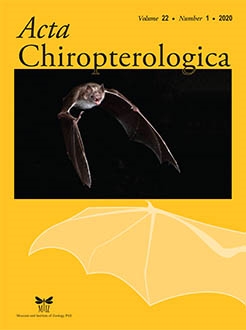The proliferation of native, alien, invasive and domestic species offers enough novel and abundant food resources for the common vampire bat, Desmodus rotundus, to potentially alter preferences for prey. By reference to a stable-isotope analysis for carbon and nitrogen, we report here on the choices of introduced mammal prey made by D. rotundus residing on Anchieta Island — a tropical land-bridge island from which domestic animals were removed and 100 individuals of 15 mammal species were introduced intentionally. Our analysis shows that the studied individuals of D. rotundus were more likely to prey upon species of open habitats (mean value of δ13C = -14.8‰), that is, animals with high δ13C values characterising the consumption of C4 resources. The δ15N values for D. rotundus were higher than expected, most likely similar to apex predator species (mean value of 8.2‰) and overlapped the isotopic niche with capybaras (Hydrochoerus hydrochaeris) on the island. Values were in turn distant from those noted for coatis, as well as other potential prey from a preserved area on the mainland (capybaras included), indicating that, from among all the potential mammalian prey species, the studied bats were feeding exclusively on capybaras, which also represent the species with the greatest mammalian biomass on the island. Previous information regarding the time of human occupation suggests that the domestic animals then present on Anchieta Island might have been the main prey of D. rotundus and responsible for maintaining a viable population. As capybaras were introduced only 36 years ago, this suggests a rapid shift in predation preference induced by anthropogenic disturbances that have allowed D. rotundus to exploit these rodents successfully. Records in the literature further show that common vampire bats were not captured in preserved areas of the mainland close to Anchieta Island, indicating that the rate of capture characterising D. rotundus is usually low in natural forested habitats where potential prey are scattered. As three individuals of the introduced population of capybaras were confirmed to have died from bat rabies virus (RABV) in 2020, we advocate periodic monitoring for bat rabies viruses in the D. rotundus population on Anchieta Island (as well as nearby areas), so that the magnitude of the outbreak may be determined and control strategies developed. Such actions are all the more important given that both the island and nearby areas are frequented by tourists. We highlight that the prey choice indicated here is context-dependent, and possibly influenced by the removal of domestic animals, as well as the explosive population growth achieved by the introduced capybaras, in combination with the predictability of their foraging behaviour.
How to translate text using browser tools
3 September 2020
Prey Choice of Introduced Species by the Common Vampire Bat (Desmodus rotundus) on an Atlantic Forest Land-Bridge Island
Fernando Gonçalves,
Marcelo Magioli,
Ricardo S. Bovendorp,
Katia M. P. M. B. Ferraz,
Letícia Bulascoschi,
Marcelo Z. Moreira,
Mauro Galetti
ACCESS THE FULL ARTICLE

Acta Chiropterologica
Vol. 22 • No. 1
June 2020
Vol. 22 • No. 1
June 2020
Anchieta Island
Atlantic forest
Brazil
Capybara
diet analysis
feeding habit
predation




